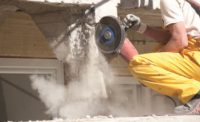Video: OSHA Addresses Questions On New Silica Standards

WASHINGTON D.C. — The U.S. Dept. of Labor’s Occupational Safety and Health Administration (OSHA) has unveiled new resources to help with better understanding of new standards regarding silica.
The resources consist of a website that addresses frequently asked questions (FAQs) and a series of training videos (see below for one of the videos). The materials are all available online.
Developed by OSHA in cooperation with industry and labor organizations, the FAQs provide employers and workers with guidance on the standard’s requirements.
In addition, a series of six new videos instruct users on methods for controlling exposure to silica dust when performing common construction tasks, or using construction equipment. The videos cover topics including handheld power saws, jackhammers, drills, and grinders.
One of the videos — about handheld power saws — can be viewed below. Additional videos can be viewed at https://www.osha.gov/dsg/topics/silicacrystalline/construction.html#VideosTable1Tasks
Under the Occupational Safety and Health Act of 1970, employers are responsible for providing safe and healthful workplaces for their employees. OSHA’s role is to help ensure these conditions for America’s working men and women by setting and enforcing standards, and providing training, education and assistance.
OSHA's Respirable Crystalline Silica standard for construction requires employers to limit worker exposures to respirable crystalline silica and to take other steps to protect workers.
The guidelines are noteworthy for roofing contractors because they cover everything from exposure assessments to methods of compliance including the medical surveillance provisions. It also lays out possible penalties for failing to comply.
All construction employers covered by the standard are required to:
- Establish and implement a written exposure control plan that identifies tasks that involve exposure and methods used to protect workers, including procedures to restrict access to work areas where high exposures may occur.
- Designate a competent person to implement the written exposure control plan.
- Restrict housekeeping practices that expose workers to silica where feasible alternatives are available.
- Offer medical exams-including chest X-rays and lung function tests-every three years for workers who are required by the standard to wear a respirator for 30 or more days per year.
- Train workers on work operations that result in silica exposure and ways to limit exposure.
- Keep records of exposure measurements, objective data, and medical exams.
Looking for a reprint of this article?
From high-res PDFs to custom plaques, order your copy today!




